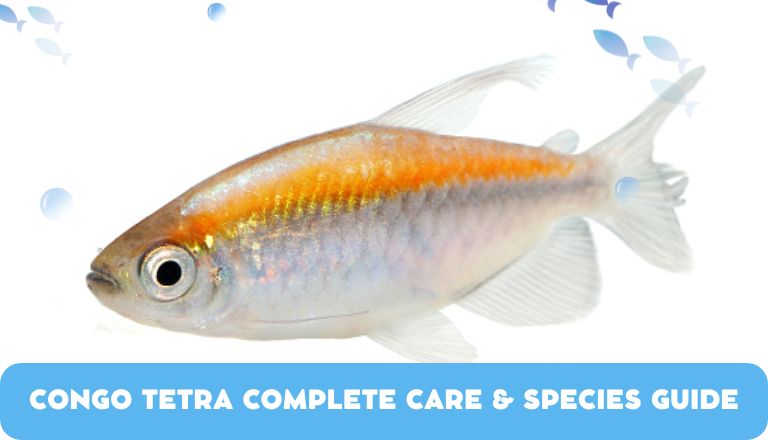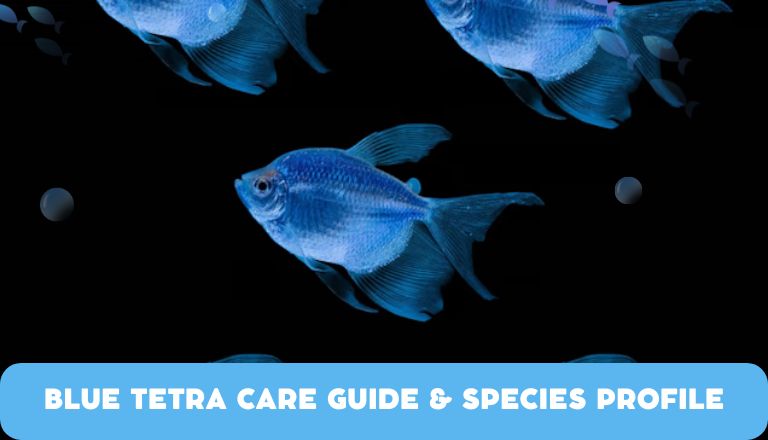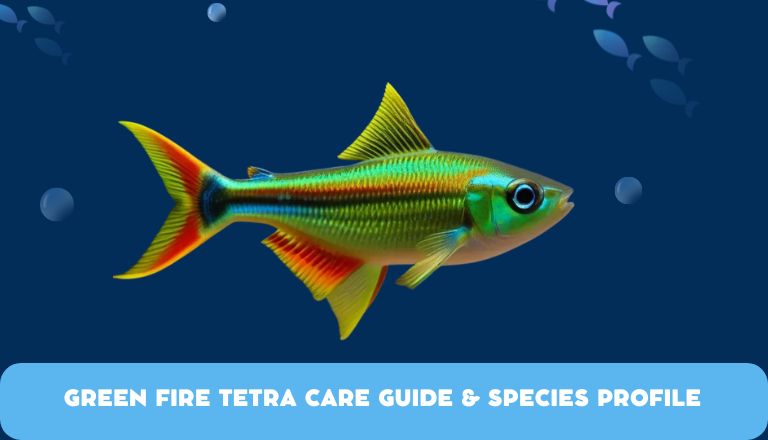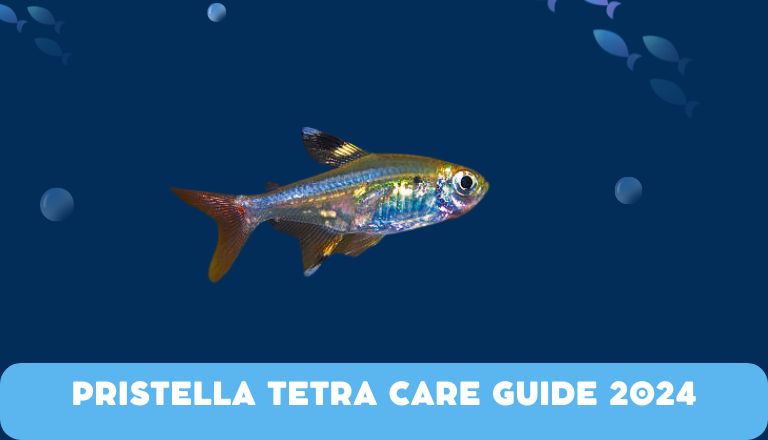Congo Tetra Complete Care & Species Guide
If you want to add a vibrant splash of color to your aquarium, look no further than the Congo Tetra. In this comprehensive guide, we will delve into the complete care and species of the Congo Tetra, equipping you with all the necessary information.
From their origins in the Congo River in Africa to their preferred water parameters and ideal tank mates, this article will cover everything you need to know about caring for Congo Tetras. Whether you’re a seasoned hobbyist or a beginner, our guide enhances your experience as an aquarist.
Congo Tetra Facts & Overview
Congo Tetra is scientifically known as Phenacogrammus interruptus. It originates from the Congo River Basin. These vibrant freshwater fish are popular due to their striking red and black coloring. They typically grow 2.5 to 3.5 inches in size. They have a lifespan of 3-5 years. They are peaceful and social creatures that thrive in schools.
Congo Tetras can be found in slow-flowing streams and rice paddies. They feed on small insects and plant matter. These fish are known for their lively behavior and playful interactions with other tank mates.
| Family | Alestidae |
| Origin | Congo River Basin |
| Social | Peaceful schooling fish |
| Tank Level | All levels |
| Minimum Tank Size | 30 gallons |
| Diet | Omnivores |
| Breeding | Egg layer |
| Care | Moderate |
| pH | 6.0 to 7.5 |
| Hardness | 3 to 18 dGH |
| Temperature | 73.0 to 82.0 F (22.8 to 27.8 C) |
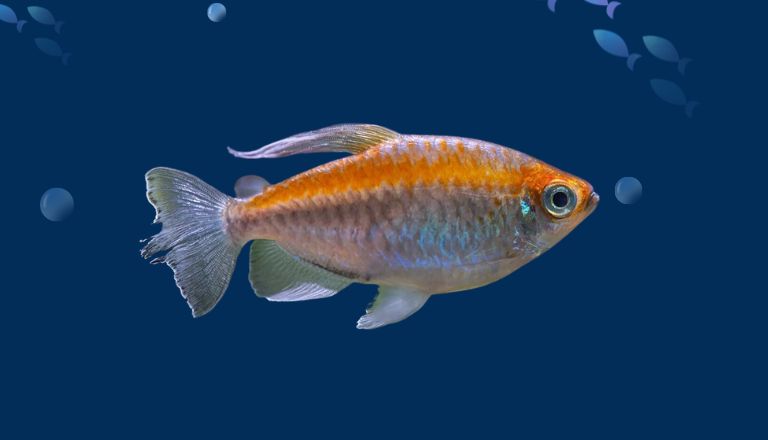
Congo Tetras are a delightful species for both beginner and experienced aquarists. Their bright colors, social nature, and easy maintenance make them a popular choice for community tanks. Provide them a well-maintained environment enriched with live plants and hiding spots, to enjoy their natural behaviors within your home aquarium.
Origin
The Congo tetra is a species of fish in the African tetra family. They originate from the central Congo River Basin in Africa. These colorful fish live in many places in their home area, like slow streams, ponds, and rice fields. The Congo Tetra is a peaceful species that thrives in schools.
The Congo tetra was found in 1949 and became popular as an aquarium fish in the 1960s. Florida fish farmers improved a breeding line in the 1970s, and most pet store fish come from this line. They will have the same colors and long tails as the original African fish.
Adult Congo Tetra Size & Lifespan
Adult Congo Tetras typically grow to a compact size of about 2 to 3 inches in length. Their lifespan ranges from 3 to 5 years, but with proper care and a well-maintained environment, they can live even longer.
COMMON NAME: Congo tetra
SCIENTIFIC NAME: Phenacogrammus interruptus
ADULT SIZE: 2.5 to 3.5 inches
LIFE EXPECTANCY: 3 to 5 years
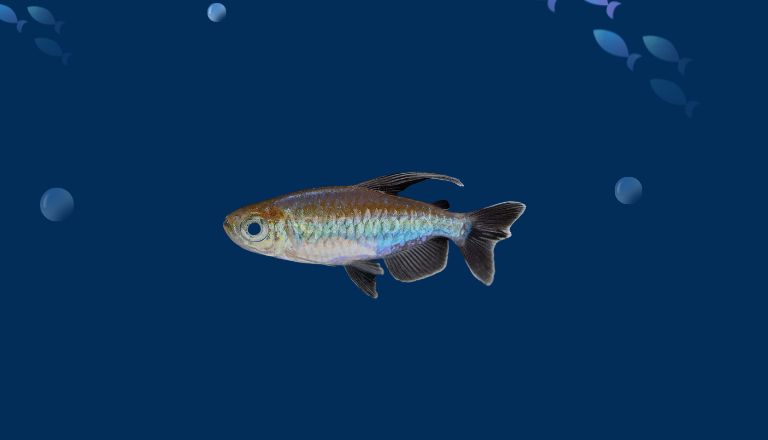
These tetras add a lively display to any tank. To ensure their health and longevity, provide them with a varied diet consisting of high-quality flakes, pellets, and frozen foods. Adult Congo Tetras may be small in size, but they bring a big personality to any aquarium.
Availability
The Congo Tetra is known for its vibrant colors and peaceful temperament. They are readily available in most pet stores specializing in tropical fish. The availability of Congo Tetra fish varies depending on the region and the season.
The price of Congo tetra fish can vary depending on factors such as the size, quality, and location of where you are purchasing them. Before buying, check with local pet stores or online suppliers to see their availability and to ensure they are healthy.
Appearance & Behavior
Congo tetras are small freshwater fish. They have a striking appearance with a shimmering silver body highlighted by iridescent blue and yellow markings. These fish have a torpedo-shaped body that is ideal for swift swimming.
Congo tetras are active and social. They prefer to swim in schools. They get along well with other non-aggressive species. They accept a variety of foods including flakes, pellets, and live or frozen food.
Colors, Patterns, Fins, and Sex Differences
Congo Tetras are small and vibrant fish. They have a dazzling array of colors and intricate patterns. These fish come in a range of hues including bright reds, oranges, blues, and yellows. Their bodies are adorned with striking horizontal stripes or spots that add to their eye-catching appearance.
Congo Tetras also showcases a variety of fin shapes. Their fins can be long and flowing. These add a graceful element to their swimming movements. The distinctive shapes of their fins serve aesthetic purposes and aid in propulsion through the water.
Males Congo Tetras tend to display more intense coloring and larger fins compared to females. This sexual dimorphism distinguishes between male and female individuals within a school of these captivating fish.
Typical Behavior
Congo Tetras are peaceful and social creatures. They thrive in groups of at least six individuals. They exhibit typical schooling behavior. They stick together as they swim gracefully through the water. These fish prefer well-planted aquariums with plenty of hiding spots to explore and feel secure. These small fish are popular among hobbyists for their peaceful nature and striking red fins.
The fascinating behavior of Congo Tetras is their courtship rituals. Males display vibrant colors to attract females during the breeding season. Watching these colorful displays is a mesmerizing experience for aquarium enthusiasts. Congo Tetras are also known for their gentle nature towards other tank mates.
Congo Tetra Care & Tank Requirements
Provide them with a well-maintained tank with plenty of plants for hiding spots and swimming space for their caring. They thrive in slightly acidic water with a suitable temperature. To keep them healthy and live longer, change their water regularly and feed them a mix of good flake food, frozen brine shrimp, or live brine shrimp.

To create an ideal environment for Congo Tetras, provide areas for exploration. With proper care and attention to their specific requirements, Tetras can flourish in a home aquarium.
Habitat and Tank Requirements
When setting up a tank for Congo Tetras, mimic their natural habitat to promote their well-being. Provide ample hiding spots such as plants and driftwood in the tank. A sandy substrate is preferred to replicate the soft riverbeds.
In terms of tank requirements, a minimum tank size of 20 gallons is recommended. They thrive in slightly acidic water with a pH level between 6.5 and 7.5 and a temperature range of 72-84°F. Changes the water regularly to maintain good water quality for these sensitive freshwater fish species. Use efficient filtration to maintain water quality because these fish are sensitive to ammonia levels.
By creating a well-balanced environment that mirrors their natural habitat, you can ensure the health and happiness of your Congo Tetras in captivity.
Tank Conditions
Maintain optimal conditions in the tank for the health and well-being of these beautiful fish. These tetras thrive in slightly acidic water with a pH level of around 6.5 to 7.5 and a temperature range of 74-82°F (23-28°C). Provide them with a well-filtered tank.
Decorate the tank with live or silk plants to mimic their natural habitat. Provide hiding spots and areas for exploration. Keep the lighting subdued, as Congo Tetras prefers dimly lit environments. Changes the water regularly and maintenance routine to keep ammonia and nitrite levels low. Monitor water parameters regularly using test kits to quickly address any issues that may arise in their home aquarium.
Disease
One common disease that affects Congo Tetras is the Ich. It is also known as white spot disease. It is caused by a parasite called Ichthyophthirius multifiliis, which manifests as small white spots on the fish’s body. This parasite is highly contagious and can quickly spread throughout an aquarium if not treated promptly.
To combat Ich, quarantine infected fish. Treat them with anti-parasitic medications, and raise the water temperature to accelerate the parasite’s life cycle.
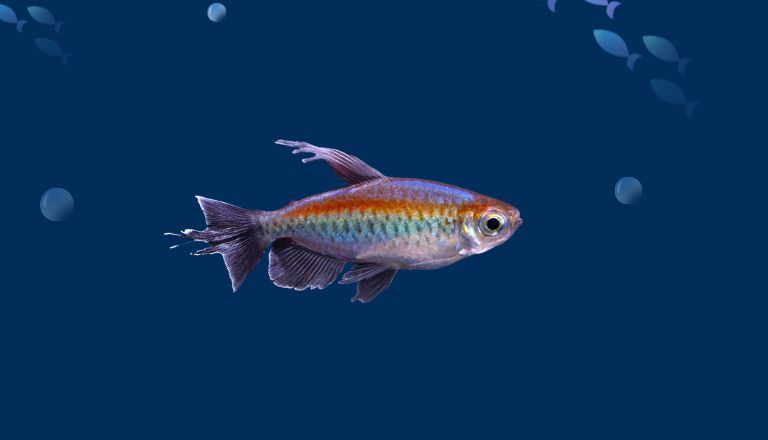
Another common ailment that Congo Tetras may encounter is fin rot. It is a bacterial infection that targets their fins and tails. Fin rot typically occurs due to poor water quality or stress, leaving the fish vulnerable to opportunistic bacteria. Symptoms include frayed or disintegrating fins, along with discoloration and inflammation. Maintain pristine water conditions, remove any decaying organic matter from the tank, and administer antibiotics if necessary to treat fin rot.
Tank Mates
Choose peaceful nature and small-size tank mates for Congo Tetra. Good companions include small, non-aggressive fish like Neon Tetras, Corydoras Catfish, and Cherry Shrimp. These species thrive in similar water parameters and won’t outcompete the Congo Tetras for food or space.
Adding tank mates that are too large or aggressive can stress out the Tetras and lead to health issues. Avoid species like bettas, guppies, or cichlids. They may nip at the fins of the Congo Tetras. Keep a well-balanced aquarium with compatible tank mates for a harmonious environment for your fish to thrive in.
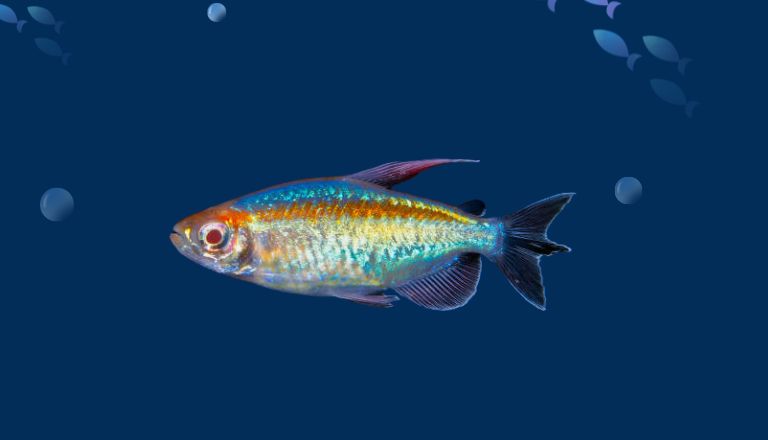
Monitor your tank closely after introducing new tank mates to watch for any signs of aggression or compatibility issues. Provide ample hiding spaces and plants to reduce potential conflicts between different species. By carefully selecting suitable tank mates for your Congo Tetra, you can create a vibrant and diverse aquatic community.
Diet and Feeding
Congo Tetra fish require a well-balanced diet to thrive in aquarium settings. Their feeding habits can vary, but they mainly eat live or frozen foods like bloodworms, brine shrimp, and daphnia. Offer them a varied diet to ensure they receive all the necessary nutrients for growth and health.
Congo Tetras can also consume high-quality flake or pellet foods designed for tropical fish. These prepared foods should be suitable for their small mouths and provide essential vitamins and minerals. Feed them small portions several times a day rather than one large feeding to mimic their natural grazing behavior.
Maintaining a diverse diet rich in both live/frozen foods and high-quality flakes/pellets will keep your Congo Tetra fish healthy and happy in your aquarium. By understanding their specific dietary needs, you can create an optimal feeding regimen that promotes their overall well-being.
Breeding
Congo tetras are relatively easy to breed. The breeding process begins with setting up a separate tank for the breeding pair, including plants or spawning mops for the female to lay her eggs on. The water parameters should be closely monitored and maintained at a suitable temperature of around 78-80°F. Once the male and female are introduced, they will begin their courtship rituals.
As the female lays her eggs, the male will fertilize them by releasing his sperm over them. After spawning, remove the adult fish from the tank to prevent them from eating their eggs or fry. The eggs will hatch in 24-36 hours. After hatching, feed the fry infusoria or newly hatched brine shrimp until they can eat crushed flakes or microforms. Breeding Congo tetras can be a rewarding experience for aquarists interested in fish reproduction.
Conclusion
Congo Tetra Complete Care & Species Guide provides essential information for anyone looking to care for these beautiful fish. From the specific water parameters they require to their dietary needs and compatibility with other fish species, this guide offers a comprehensive overview.
By following the accurate and detailed advice provided in this guide, fishkeepers can ensure the health and well-being of their Cango Tetras. With its compact format and relevant information, this guide is a valuable resource for both beginners and experienced aquarium enthusiasts.
FAQs
How Many Congo Tetras Should be Kept Together?
Congo Tetras are social fish that thrive in groups, so it is recommended to keep them in a school of at least 6 individuals.
What Fish are Compatible with Congo Tetras?
Congo Tetras prefer to be kept with peaceful species that won’t bother them. Good tankmates for Congo Tetras include other tetra species like Neon Tetras, Cardinal Tetras, and Rummy Nose Tetras.
How Big do Congo Tetra Fish Get?
Congo tetra fish grow to an average size of about 2.5 to 3.5 inches in length when fully mature.
Are Congo Tetras Aggressive?
Congo Tetras are generally peaceful and non-aggressive fish. They have a calm demeanor and can coexist peacefully with other fish in a community aquarium.
What is the Price of Congo Tetra Fish?
On average, you can expect to pay anywhere from $5 to $15 per fish. But prices may be influenced by the rarity of the species and whether they are being sold by a breeder or a pet store.

